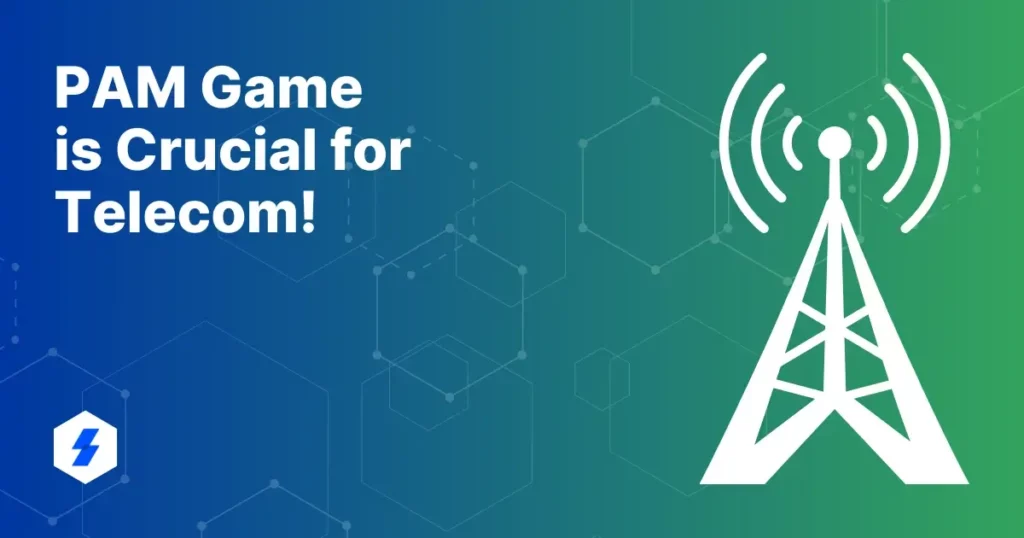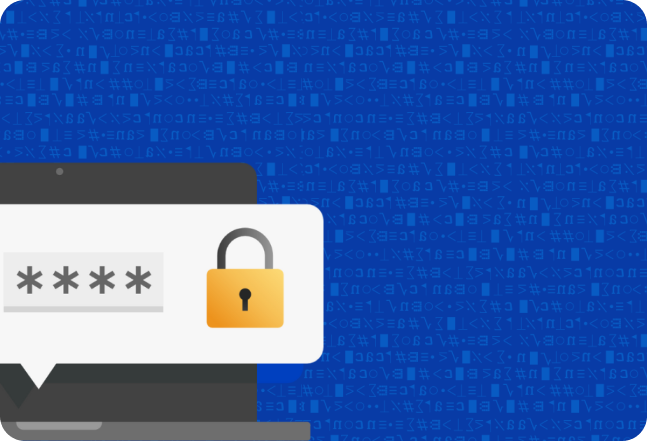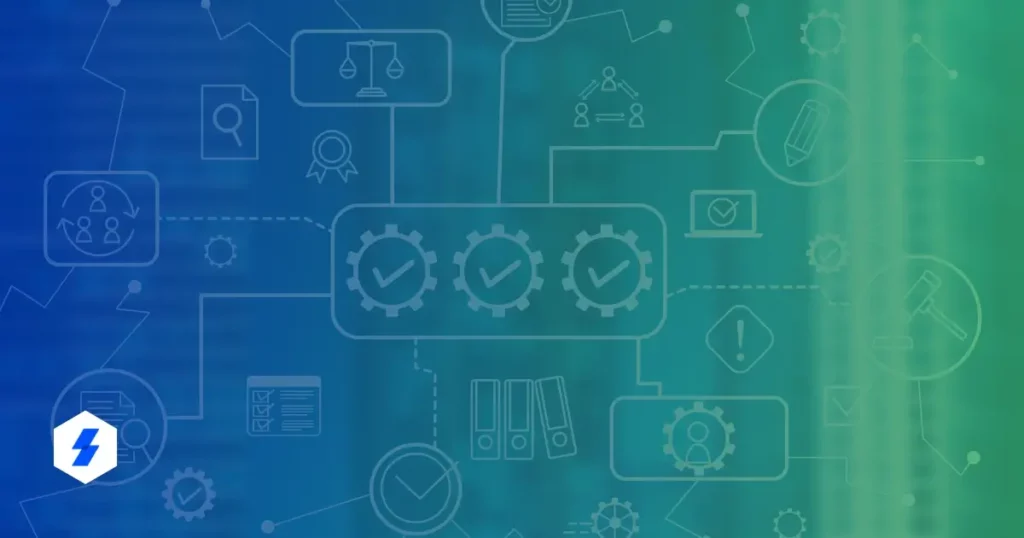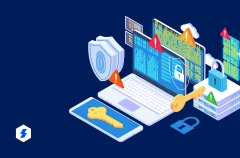Privileged Access Management for Finance and Banking
PAM Game is Crucial for Telecommunication Service Providers!

Password Management in Network Security:
What is it? Why is it Crucial?

The telecom industry has grown immensely in recent years. Telecommunication service providers have been actively innovating to meet the growing demands of consumers and businesses for faster, more reliable, and feature-rich telecom services.
From 5G, which enables high-capacity networks for applications like telemedicine and e-learning, expanding telecom’s reach into various sectors; to AI, which enhances user experiences, reduces costs, detects network problems, and offers personalized services; to Internet of Things (IoT), which minimizes network downtime, improves business procedures, and creates revenue opportunities; to WI-FI 6, which when combined with the others, can enable seamless data transfer; the innovations in recent years have been truly amazing.
The telecom ecosystem is vast and encompasses various business verticals, such as development, marketing, and support. It serves as the backbone for not only personal communication but also for the functioning of businesses, governments, and emergency services. And in order to control and manage huge requirements, the telecom IT infrastructure operates in large and distributed environments. This inadvertently paves the way for cybersecurity threats.
The telecom industry, given its significance, becomes an attractive target for attackers who are well-resourced and highly motivated to compromise critical infrastructure. These include nation-state cyber attackers who aim to disrupt communications, gather intelligence, or achieve other strategic goals.
Today, telecommunication service providers invariably deal with a large number of privileged accounts spread across various networks and technologies. A successful cyber attack gaining unauthorised access to these accounts can affect not only communication but also other interconnected sectors. Disrupting telecom services can have far-reaching consequences, including economic and security implications. This underscores the need for robust cybersecurity measures, which is where Privileged Access Management (PAM) becomes the need of the hour.
IT Security Challenges Facing Telecommunication Service Providers
On account of large IT operational infrastructure telecommunication service providers tend to manage, the threat surface is inevitably expanded. As the number of privileged accounts increases, the access control risks also intensify. The complex infrastructure, numerous user accesses, colossal amounts of data, cloud migration, and vendor access can create security challenges in the form of:
Compliance
Large telecom organizations operate in a highly regulated environment. They are subject to an array of national and international industry-specific regulations pertaining to data protection. One of the primary concerns is the sheer volume of data these organizations handle. With sensitive customer information, billing records, and communication logs flowing through their systems, maintaining data privacy and security is paramount. Ensuring compliance with these regulations is a multifaceted challenge, as non-compliance can lead to hefty fines and tarnished reputations.
Scalability
As telecommunication service providers expand their networks and services, they must simultaneously look to fortify their cybersecurity defenses as well. Each new network element and device represents a potential vulnerability if not adequately secured. The scalability of security measures is a persistent issue and striking the right balance between growth and security, a constant challenge.
Third-Party Access Management
Telecommunication service providers often rely on third-party vendors and partners to provide critical services and infrastructure components. While these partnerships are essential for business operations, they introduce significant security risks.
Managing access control policies and user authentication mechanisms of third-party entities is a complex task. Ensuring that whoever is accessing the critical systems and applications is authorized to do so can be challenging. Any security lapse can potentially compromise the organization’s data and infrastructure entirely.
Large-Scale Operations
The vastness of large-scale telecom operations can create operational gaps that cybercriminals may exploit. Managing a complex infrastructure, which includes numerous data centers, switching stations, and communication networks, is a monumental task. Often, this complexity results in overlooked vulnerabilities. A breach in one area can quickly spread, affecting the entire network.
Privileged User Management
Privileged users, such as network administrators and IT personnel, have extensive access to critical systems and data. Managing and monitoring their activities is crucial to preventing insider threats and unauthorized access.
Benefits of Privileged Access Management (PAM)
Privileged Access Management serves as a robust line of defense, focusing on protecting the core elements of a telecom organisation’s network – its users and access points.
PAM operates on the foundational principles of zero trust, which means it assumes that no user or system, whether inside or outside the network, can be trusted by default. Instead, it implements stringent security measures to verify, control, and monitor access, thereby containing threats and fortifying the enterprise’s security posture.
Here’s how PAM enables telecommunication service providers to protect their networks comprehensively:
Continuous Discovery and Monitoring
One of the fundamental pillars of PAM is continuous discovery and monitoring. In a dynamic IT environment, it’s imperative to have real-time visibility into who is accessing what resources, from where, and for what purpose. PAM solutions excel in this regard by constantly scanning the network for privileged accounts, devices, and access points. By maintaining an up-to-date inventory of these critical components, telecom organizations can swiftly detect anomalies and unauthorized access attempts, thereby preventing potential security breaches.
Auditing Capabilities
Effective auditing is the cornerstone of robust cybersecurity. PAM solutions offer robust auditing capabilities that allow organizations to track and record all privileged sessions comprehensively. This includes monitoring the commands executed by administrators, changes made to sensitive configurations, and access to critical systems. The audit logs serve as invaluable resources for forensic investigations, regulatory compliance, and identifying suspicious activities. By maintaining a detailed record of all privileged access, PAM allows telecommunication service providers to respond to security incidents effectively.
Secure User Access
PAM solutions provide a secure framework for managing user access. Role-based access control (RBAC) streamlines access management by aligning permissions with job functions. PAM enforces the principle of least privilege, ensuring that users are granted only the access rights necessary for their roles and responsibilities. Furthermore, Multi-factor authentication (MFA) and strong authentication protocols are often integrated into PAM systems, adding an extra layer of security to user access.
These measures collectively reduce the risk of insider threats and minimize the attack surface.
Support in Break-Glass Situations
In crisis situations, such as security incidents or system failures, quick and controlled access to critical systems becomes crucial. PAM systems offer “break-glass” procedures, which allow authorized personnel to gain emergency access to privileged accounts or systems. However, this access is strictly monitored and audited to prevent misuse. PAM ensures that even in high-stress situations, security protocols are not compromised.
360° Password Protection
Password security remains a central concern in cybersecurity. PAM solutions address this concern by implementing robust password management practices. They enforce password complexity rules, regular password rotation, and secure storage of credentials in an encrypted password vault.
Endpoint Security
Endpoint security is a critical component of modern telecom IT infrastructure, and PAM extends its protection to endpoints. PAM solutions control and manage policies from a centralised console to allow applications to specific users on specific endpoints. This also includes allowing normal users to elevate time-limited rights on-demand for specific applications.
Sectona PAM for Telecommunication Service Providers
In an ever-evolving threat landscape, Sectona PAM empowers telecommunication service providers to proactively protect their networks and respond effectively to security challenges, making it an indispensable component of modern cybersecurity strategies. Experience the aforementioned benefits and more with Sectona PAM.
Book a demo today.
Recent Posts
GET SUPPORT


- © 2024 Sectona Technologies Private Limited. All rights reserved. All trademarks held by their respective owners.
- © 2023 Sectona Technologies Private Limited. All rights reserved. All trademarks held by their respective owners.
- Privacy Policy
- Terms
- Eula
- Responsible Disclosure
GET SUPPORT


- © 2023 Sectona Technologies Private Limited. All rights reserved. All trademarks held by their respective owners.
- Privacy Policy
- Terms
- Eula
- Responsible Disclosure






